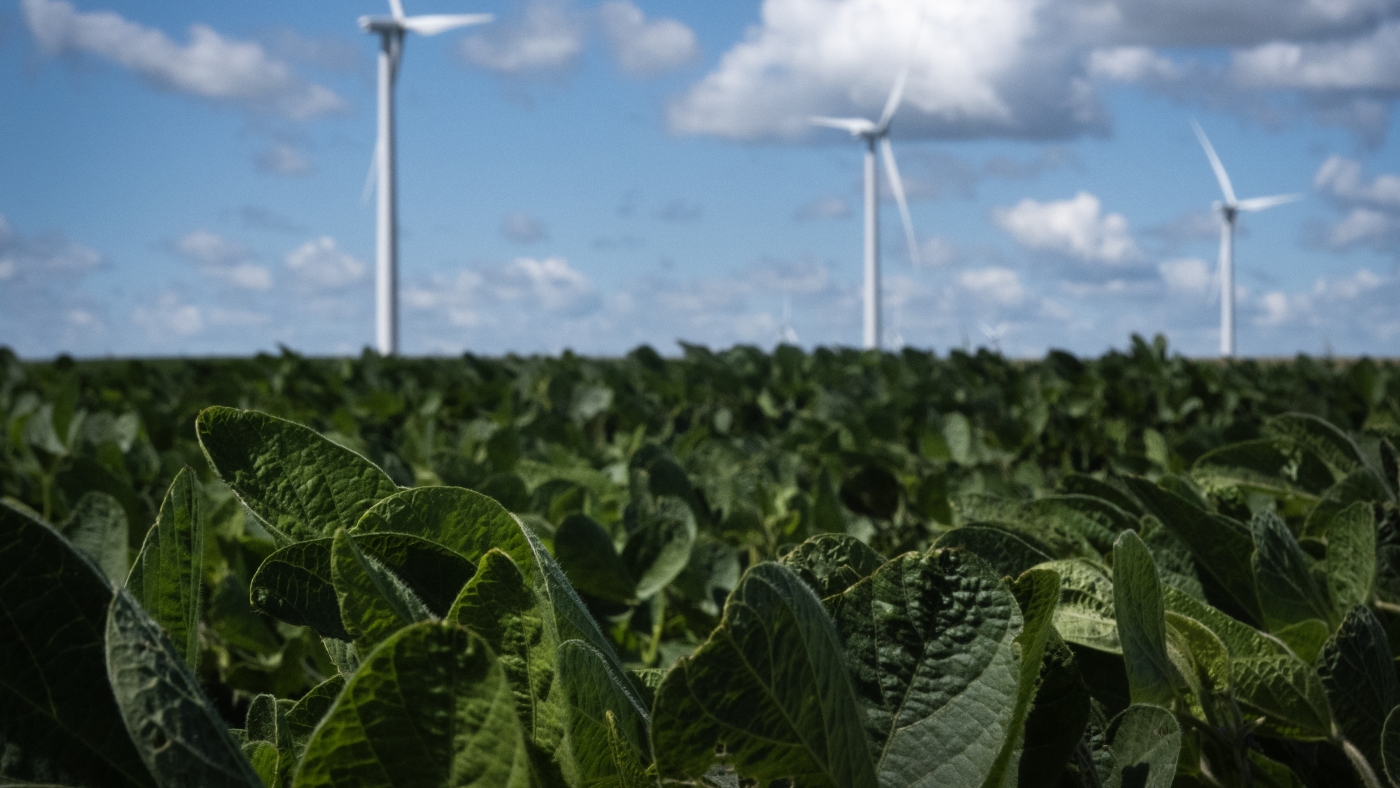Windmills towers over a soy bean field on August 10, 2024 near Charles City, Iowa.
Scott Olson/Getty Images
hide caption
toggle caption
Scott Olson/Getty Images
Climate change is affecting our food, and our food is affecting the climate. NPR is dedicating a week to stories and conversations about the search for solutions.
As NPR’s climate solutions reporter Julia Simon puts it, “modern agriculture is a big driver of climate change. Powerful warming gases are released from cows and fertilized soils, and deforestation that’s driven by rising food demand.”
You may have even started seeing changes in which plants thrive and which are struggling to survive in your area: Earlier this year, the U.S. Department of Agriculture updated its hardiness map (what can safely grow where) for the first time in 11 years. Hobby gardeners and growers alike have started experiencing changes. Recent wildfire smoke in the West may be changing the potato harvest in Idaho. Tribes in Michigan are choosing not to tap trees for maple syrup because of unseasonably warm and dry winters.
But with the challenges come efforts to find solutions. Across the country communities are tackling this challenge, so we’ve gathered some examples from across the NPR Network of how we can change the food we grow to support climate goals.
Using technology to advance the science of agriculture
Researchers at Cornell University are using a machine called a respiration chamber to measure exactly how much gas a cow emits to better understand the emissions associated with dairy and meat farming. As WSKG’s Rebecca Redelmeier reports, the data is essential for figuring out which feed additives work to reduce gas in cows and how to improve them.
➡️ LISTEN: Reimagining our Meat System
➡️ Future of tomatoes amid CA drought: Hydroponic farming?
Meanwhile, entomologist Brian Spiesman, a professor at Kansas State University, has created a new smartphone app called BeeMachine that harnesses artificial intelligence to identify different species of bees and study habitat loss. And as KCUR Kansas City reports, “the app lets the public participate in documenting bees, too, by snapping photos when they spot one,” providing valuable insight on where bees live.
Some solutions start by honoring indigenous knowledge
As the Gulf States Newsroom’s Danny McArthur reports, “environmentally conscious approaches to farming are getting more federal support in the United States. In the Gulf South, some small farmers are taking advantage of the billions of federal dollars now available for climate-smart agriculture.”
McArthur followed up with three farms across Mississippi that are using sustainable practices, some of which are a return to the techniques Black farmers have used for generations. For this year’s Climate Solutions Week, McArthur also followed Black-owned farms growing crops with the climate in mind.
➡️ How the Seed Savers Exchange works to preserve American crop biodiversity
Others are reintroducing biodiversity into their local ecosystem. Angie Comeaux started an indigenous food forest on her farm in Florala, Ala., featuring thousands of native trees, along with hundreds of plant species. The crops are planted in such a way as to foster cooperation, designed to grow stronger, together.
How we use the land we have matters
There’s only so much land available, and how we choose to use it often reflects our priorities as an economy. But some communities have begun to figure out ways to maximize the yield, while sustaining the environment.
For example, as Frank Morris reports for Harvest Public Media, “solar power is the fastest growing source of electricity in the U.S., but some new solar installations are taking over productive farm ground. Scientists are trying to develop ways to get both calories and kilowatts from the same land.” So researchers are experimenting with different row crops, flowering plants and veggies to see what can coexist successfully with solar panels.
Meanwhile, in parts of the country where people have settled closer together, urban farming presents a world of opportunities — and new challenges to navigate. As WFAE’s Zachary Turner reports, a developer in Charlotte, N.C., is trying to build a 1,400-acre mixed-use community centered around an urban farm.
Anther effort in Charlotte partnered urban farmers and an insurance company to not only help grow food, but to provide food and farm education and help to make eating locally affordable.


